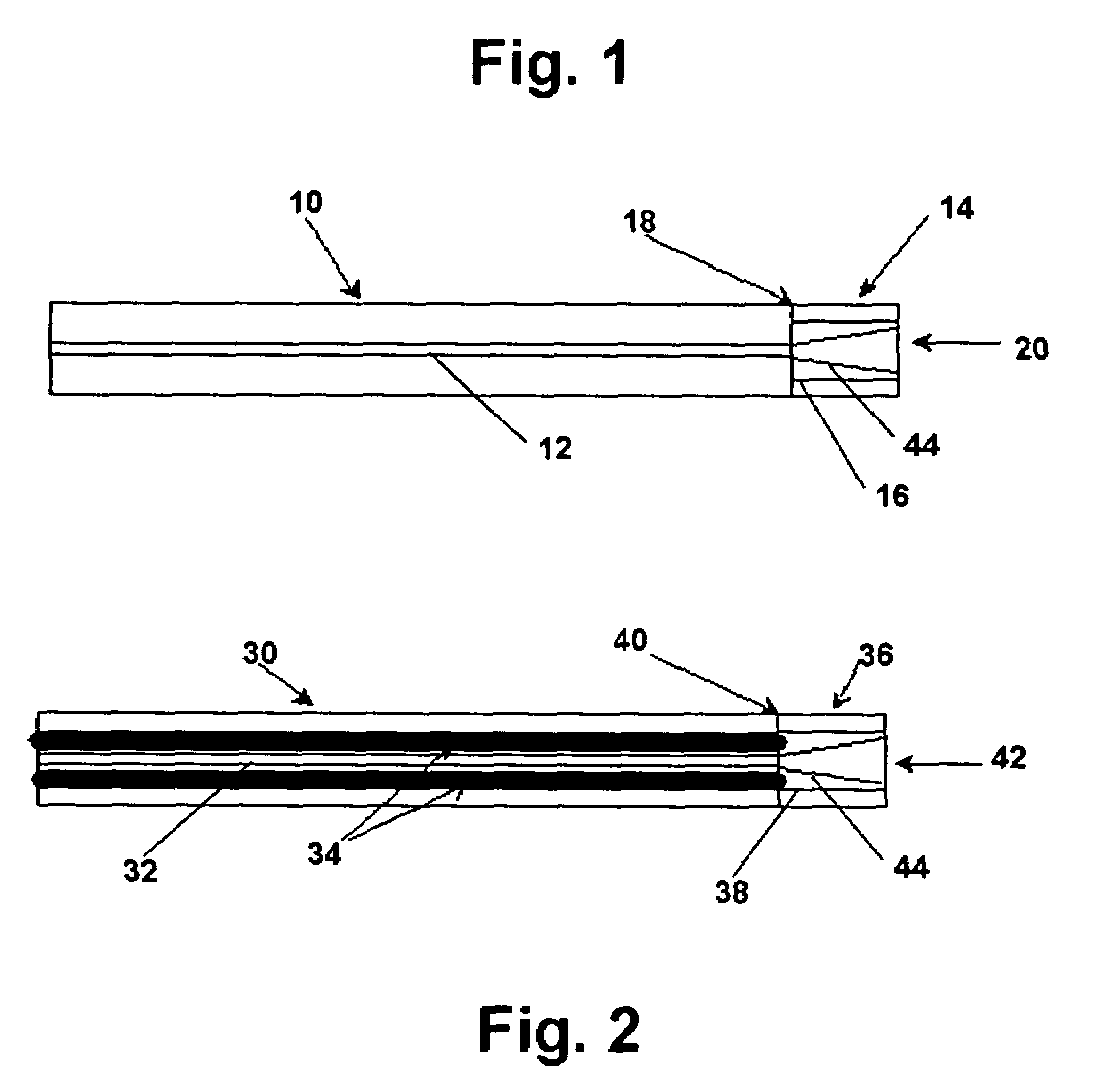Expanding single mode fiber mode field for high power applications by fusion with multimode fiber
a multi-mode fiber and high-power technology, applied in the field of optical fibers, can solve the problems of inability to reliably operate at inability to design for such high optical intensities, and limitations in lens and lens performance choice, so as to reduce the light intensities at the fiber tip, reduce the loss of high-power coupling of optical fibers, and reduce the effect of light intensity
- Summary
- Abstract
- Description
- Claims
- Application Information
AI Technical Summary
Benefits of technology
Problems solved by technology
Method used
Image
Examples
Embodiment Construction
[0012]FIG. 1 illustrates the present invention as used with a single mode fiber (SMF) 10 having a relatively small core 12 which is spliced end to end along a splice line 18 to a short length of a Multi-Mode fiber (MMF) 14 having a relatively large core 16, matching in index with the fiber 10, and a polished end 20. Multi-mode fiber 14 is preferably a step index multi-mode fiber, however, in certain applications, a graded index multi-mode fiber may also be used or an optical fiber without cladding (air cladded) having approximately similar diameter as the single mode fiber.
[0013]FIG. 2 illustrates the present invention as used with a Polarization Maintaining fiber (PMF) 30 having a relatively small core 32 and a pair of stress rods 34 which is spliced end to end along a splice line 40 to a short length of a Multi-Mode fiber 36 having a relatively large core 38, and matched in index with the fiber 30 and a polished end 42. Multi-mode fiber 36 is again preferably a step index multi-mo...
PUM
| Property | Measurement | Unit |
|---|---|---|
| length | aaaaa | aaaaa |
| angle | aaaaa | aaaaa |
| length | aaaaa | aaaaa |
Abstract
Description
Claims
Application Information
 Login to View More
Login to View More - R&D
- Intellectual Property
- Life Sciences
- Materials
- Tech Scout
- Unparalleled Data Quality
- Higher Quality Content
- 60% Fewer Hallucinations
Browse by: Latest US Patents, China's latest patents, Technical Efficacy Thesaurus, Application Domain, Technology Topic, Popular Technical Reports.
© 2025 PatSnap. All rights reserved.Legal|Privacy policy|Modern Slavery Act Transparency Statement|Sitemap|About US| Contact US: help@patsnap.com


